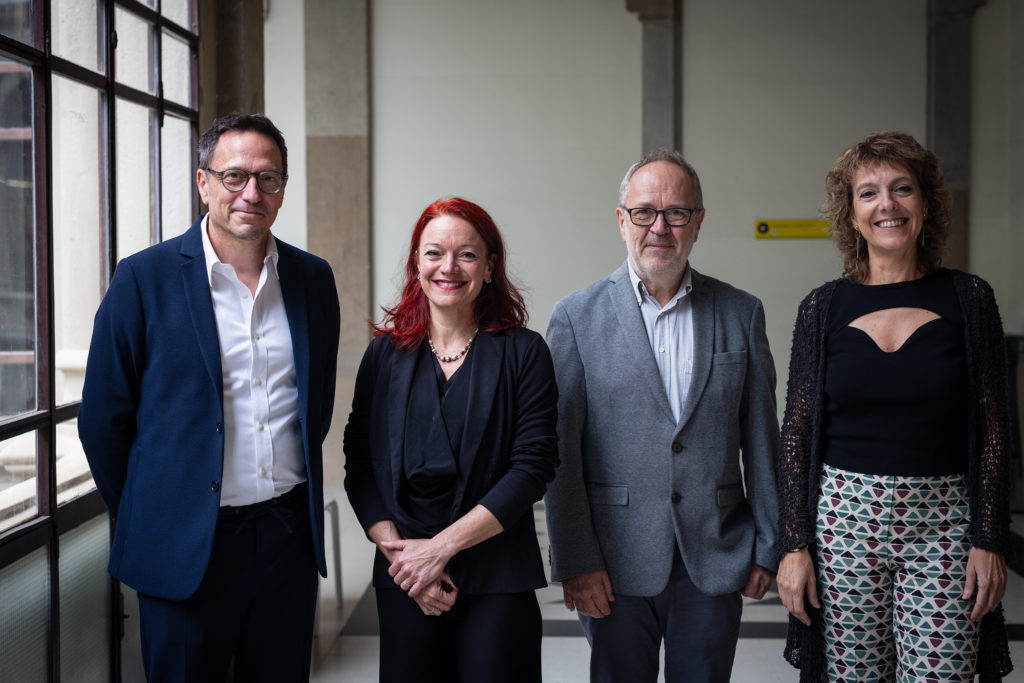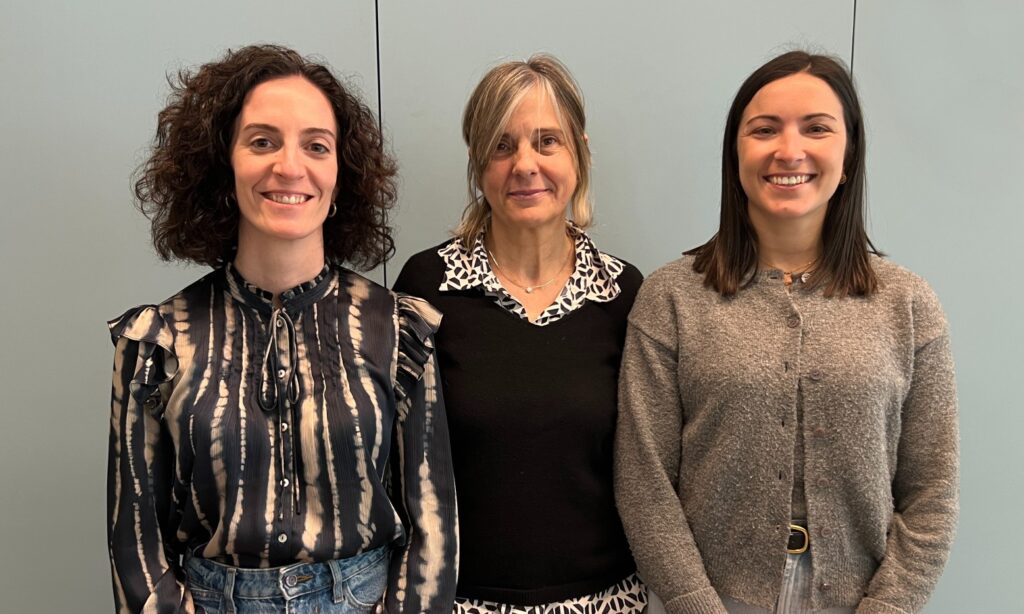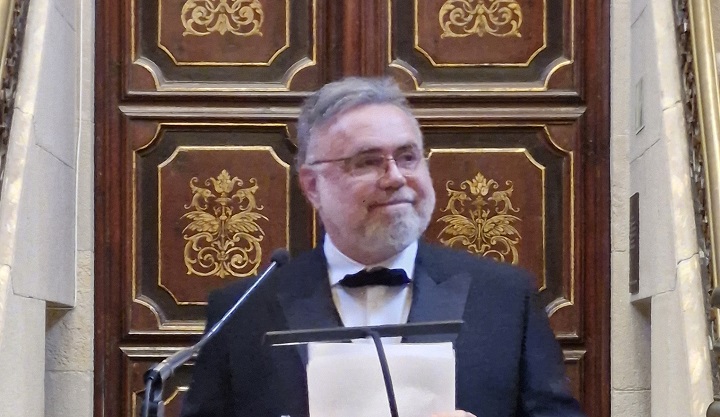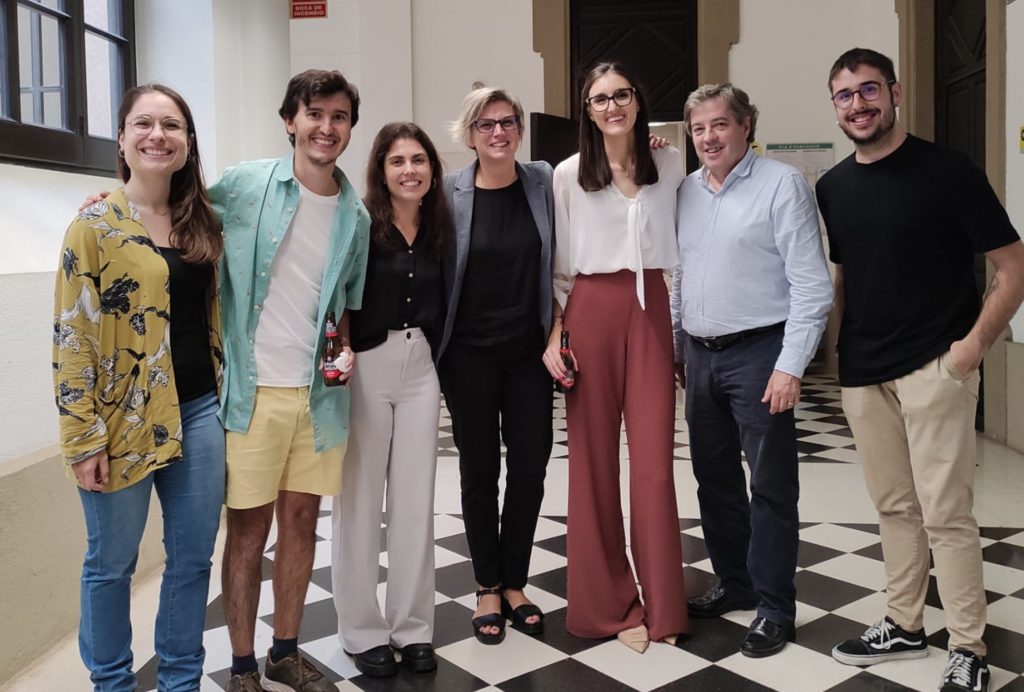
The Institute of Neurosciences of the University of Barcelona (UB) held its Annual Scientific Advisory Board (SAB) meeting from 7th to 9th October 2024. This event gathered experts from prestigious institutions to assess the Institute’s progress and discuss future strategies. A highlight of this year’s meeting was the addition of Gaël Chételat, from Inserm, French Institute for Biomedical Research, to the SAB.
Strategic Overview and Institutional Goals
The meeting opened on Monday, 7th October at the Reial Acadèmia de Ciències i Arts de Barcelona, with a welcome from Prof. Jaume Bertranpetit. Jordi Alberch, the Institute’s Scientific Director, led the session by outlining the Institute’s strategic priorities, particularly focusing on growth and innovation under the renewed María de Maeztu Excellence accreditation.
Cristina Pulido, Research Manager, provided a detailed overview of the Institute’s actions in the past year, including a special focus on young talent attraction and fostering new synergies with international research centers. Marta Rubio, Communication Manager, highlighted public engagement initiatives and noted the importance of clear communication strategies to further the Institute’s visibility and impact.
The inclusion of Gaël Chételat in the SAB was an important moment for the meeting. Chételat expressed her eagerness to contribute to the Institute’s mission. Her extensive work in brain aging research aligns with key areas of focus within the Institute, and her addition was warmly received by the SAB and Institute leadership alike.
Supporting Talent and Scientific Leadership
On Tuesday, 8th October, the focus shifted to talent development and leadership, held at the Faculty of Medicine and Health Sciences. Marta Rubio opened the morning session with a presentation on training initiatives, emphasizing the Institute’s commitment to early-stage researcher development. This was followed by presentations from Pol García and Irene Rodríguez, two PhD candidates, who shared their actions as members of the PhD Committee, garnering praise from SAB members.
The SAB members, including Mercedes Atienza (Universidad Pablo de Olavide) and Kimmo Alho (University of Helsinki), Frederic Saudou, (Institute of Neuroscience, University Grenoble-Alps, France) and Gaël Chételat (Inserm, French Institute for biomedical research, France); provided feedback and mentoring to the young researchers. They encouraged the early-stage scientists to continue refining their work and highlighted the importance of interdisciplinary collaboration.
The afternoon session was dedicated to scientific leadership, chaired by David Bartrés. Presentations from established UBneuro researchers such as Yasmina Manso, Cristina Baus, and Xavier Altafaj covered topics ranging from neurodegeneration to cognitive processing and translational medicine.
Knowledge Transfer and SAB Conclusions
The final day, Wednesday, 9th October, focused on knowledge transfer and societal impact. Almudena Campuzano, Knowledge Transfer Manager, discussed initiatives aimed at applying the Institute’s scientific findings to real-world challenges, particularly in the fields of neurodegenerative diseases and aging. This session included presentations from Mercè Pallàs, Carles Escera, Eulàlia Martí, and Hans Super, each detailing their efforts to bridge basic neuroscience with practical applications.
During the SAB’s final deliberations, they offered insightful recommendations on how to expand the Institute’s international collaborations and build on its existing research strengths. The SAB members collectively agreed on the importance of maintaining the Institute’s high standards of scientific rigor while continuing to foster young talent.
The meeting concluded with Jordi Alberch expressing his gratitude to the SAB for their guidance, stating: “Your insights and guidance are critical as we continue to push the boundaries of neuroscience. With your help, we will ensure that our work remains at the forefront of scientific excellence.”
This year’s SAB meeting not only reinforced the Institute’s current strategy but also set a clear path forward, with the addition of new expertise and fresh ideas to guide the Institute toward continued success in the coming years.


